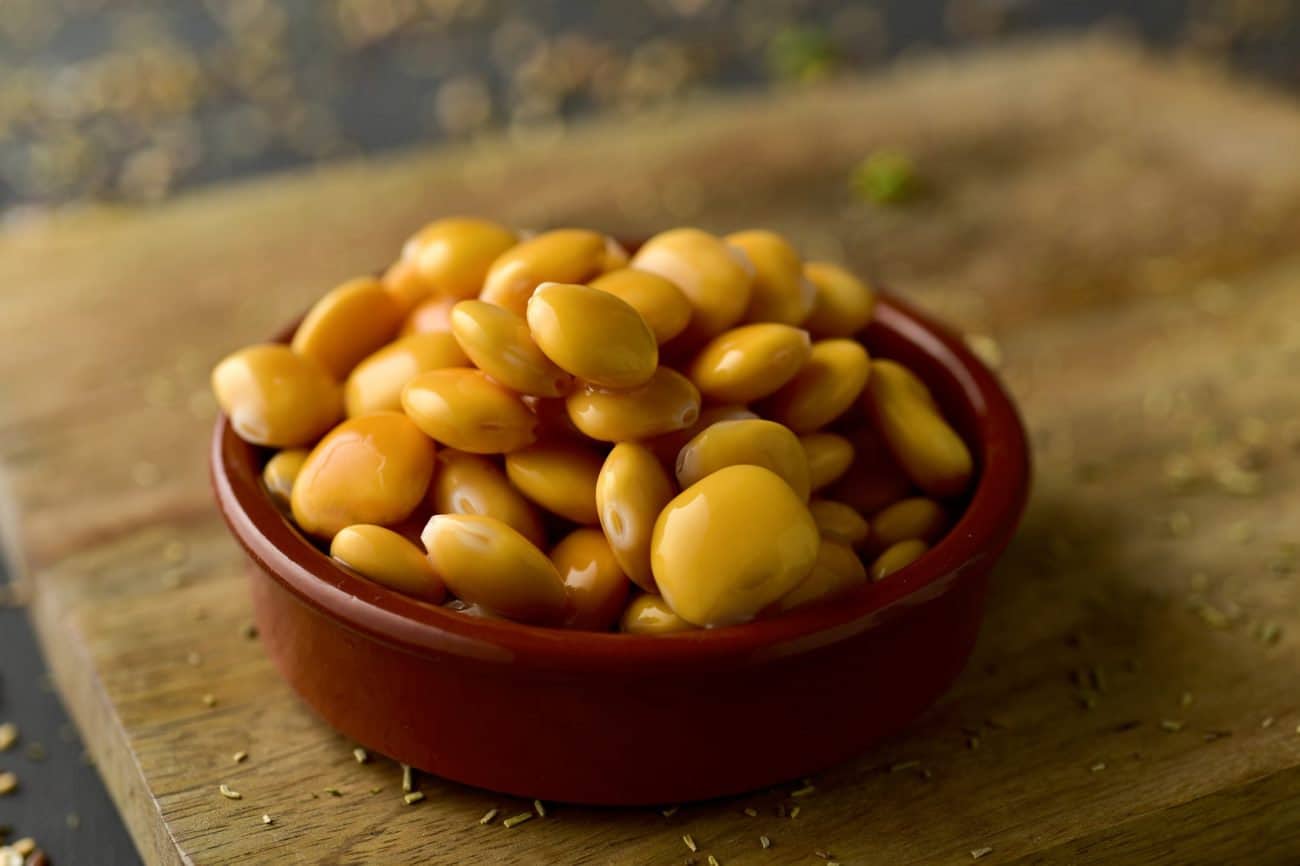Description du conseil
Flowers or seeds, everything is good in lupin, or almost. This pretty pulse is tasty, ecological, easy to cook and has loads of health-giving properties! Let’s take a closer look at all the benefits of this protein-rich plant that can be cooked to your heart’s content… for those who do not suffer from allergies.
What is lupin?
Lupins are a group of several plant species in the Fabaceae family. Does the name sound familiar? This makes sense, since the Fabaceae are none other than the pulses, those nutritional wonders that include soybeans, chickpeas and beans, broad beans or lentils. In the garden, several varieties are used as ornamental plants for their colourful clusters.
Cultivated for nearly 14,000 years for animal and human consumption, lupins have long been rejected from refined cuisine. Its down side? Its high alkaloid content, which are particularly bitter molecules, and can even be toxic in high doses. Don’t panic though, the species cultivated today for food are those that contain few or none of these molecules… The moral is, it’s fine to use lupin to cook with, but never crunch the seeds in the garden!
Lupin and allergies
Lupin is an allergen and is often cross-allergic with peanuts. If you are potentially sensitive or have a known allergy, it is best to admire it from a distance. And like any allergen, avoid introducing it too early in a child’s diet.
What are the benefits of lupin?
Do you know all about lentils and chickpeas? Vary your veggie diet and take advantage of the nutritional benefits of a pulse that can be used in many forms: whole seed, crushed seed, flour, flakes, etc
-Lupins are delicious. It is as divine as a chewable seed as it is in a recipe. In flour or flake form, it has a nutty, almost biscuity flavour.
-With 35-45% protein, it would outperform all its competitors as a source of vegetable protein. It is popular with sportsmen, vegetarians and vegans.
-Rich in fibre, it facilitates digestion and transit through the intestines.
-It is generously provided with minerals and vitamins such as sodium, copper, magnesium, iron, calcium, vitamins A, B and C.
-Its emulsifying properties means it can be used to replace eggs in many recipes.
-A hardy plant, lupin is resistant and requires few treatments. All of which makes it an organic farming champion!
-Adapted to European climates, Priméal lupins are mainly grown in France or nearby countries.
-Like all pulses, lupins have the ability to recover nitrogen from the air and recycle it into the soil. So lupin crops help to regenerate and fertilise poor soils.
How to use lupin
The real problem with lupins has long been the lack of supply. Except for flour, and even then, cooking with it was a real challenge. But luckily at Priméal we love challenges.
In flour
Crushed lupin seeds produce a flour with a pleasing yellow colour. Gluten-free, it binds, emulsifies or thickens. It can bind a sauce, replace part of the egg content in cakes, buns, shortbread or cinnamon rolls… Or even completely in pastry, biscuits, pancakes or cupcakes, to the delight of vegan cooks. And the recipes get a nice dose of protein in the process!
In flakes
Fancy reinventing muesli? Easy. At Priméal, breakfast has been reinvented by mixing lupin, oats, barley, quinoa and soya flakes, sunflower seeds, chickpea petals and apple chunks. A great way to start the day with plenty of fibre and protein… or a healthy and tasty mix that can be used to liven up yoghurt, give verrines a twist and reinvent the crumble.
In crushed or whole seeds
Do you prefer your lupins ready to eat, already mixed, as an almost complete meal? Treat yourself to a mixed rice. Combined with organic Camargue rice, sunflower seeds and a few carrot flakes, Priméal rice mix offers an interesting combination of cereals and pulses to balance the plant proteins consumed. Better still, it provides gourmet flavour and texture by combining softness and crunchiness. Even better, it stands on its own but enhances a vegetable dish or spices up a cold salad. Even better still, it only takes 15 minutes to cook!
And now, in natural seed form packed in jars and ready to eat! This is the new Priméal preserve, and we’ll tell you all about it in next week’s article.
